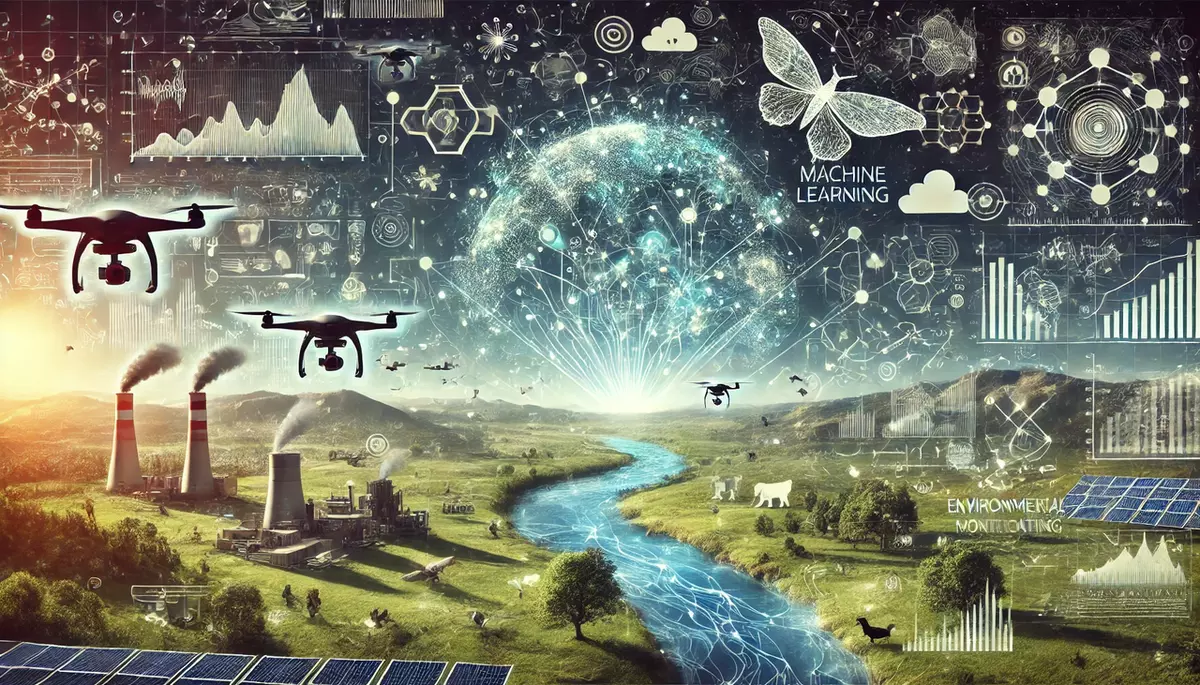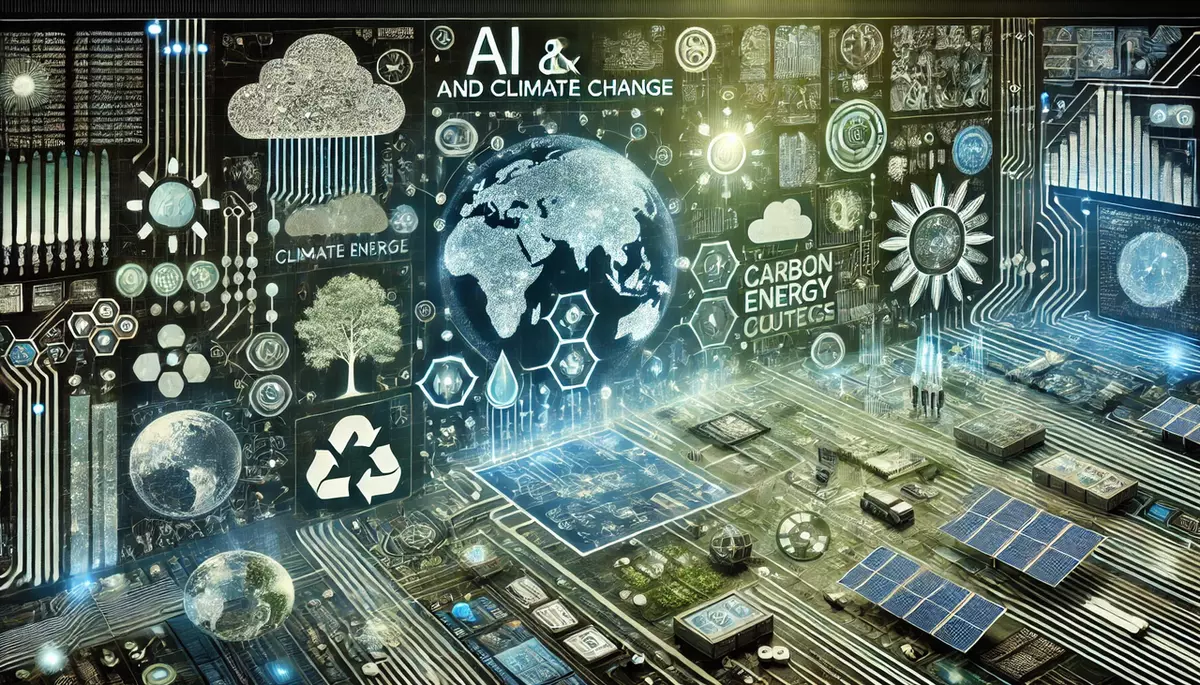Introduction
Machine learning has emerged as a powerful tool in the field of environmental monitoring, enabling the analysis of vast amounts of data to gain insights and make informed decisions about environmental issues. This knowledge article explores the applications of machine learning in environmental monitoring, its benefits, and the challenges involved.
What is Machine Learning in Environmental Monitoring?
Machine learning in environmental monitoring refers to the use of algorithms and statistical models to analyze data collected from various environmental sensors, satellites, and other sources. This data can include information on air quality, water quality, weather patterns, biodiversity, and more. By applying machine learning techniques, researchers and policymakers can identify patterns, make predictions, and develop strategies to address environmental challenges.
Key Applications of Machine Learning in Environmental Monitoring:
- Predictive Modeling: Using machine learning algorithms to forecast environmental conditions, such as air pollution levels, weather patterns, and natural disasters.
- Anomaly Detection: Identifying unusual or unexpected environmental events, such as oil spills or habitat degradation, by analyzing sensor data.
- Ecosystem Monitoring: Tracking changes in biodiversity, habitat health, and other ecological indicators using remote sensing and machine learning techniques.
- Optimization of Environmental Policies: Leveraging machine learning to inform decision-making and develop more effective environmental policies and regulations.
Benefits of Machine Learning in Environmental Monitoring
The integration of machine learning in environmental monitoring offers several key benefits:
Improved Accuracy and Efficiency
Machine learning algorithms can process large volumes of data more quickly and accurately than manual analysis, leading to more reliable insights and decision-making.
Enhanced Predictive Capabilities
By identifying patterns and trends in environmental data, machine learning models can make more accurate predictions about future environmental conditions, enabling proactive planning and response.
Automated Anomaly Detection
Machine learning algorithms can continuously monitor sensor data and automatically detect unusual environmental events, allowing for faster response and mitigation efforts.
Informed Policy Development
The insights generated by machine learning can help policymakers and stakeholders develop more effective environmental policies and regulations.
Challenges in Implementing Machine Learning for Environmental Monitoring
While the benefits of machine learning in environmental monitoring are significant, there are also several challenges to consider:
Data Quality and Availability
Ensuring the accuracy, completeness, and consistency of environmental data is crucial for effective machine learning models, but can be challenging due to factors such as sensor failures, data gaps, and data silos.
Computational Resources
Implementing advanced machine learning algorithms often requires significant computational power and storage, which can be a barrier for some organizations and regions with limited resources.
Interpretability and Explainability
Some machine learning models, such as deep neural networks, can be complex and difficult to interpret, making it challenging to understand the reasoning behind their predictions and decisions.
Ethical Considerations
The use of machine learning in environmental monitoring raises ethical concerns, such as data privacy, algorithmic bias, and the potential for misuse or unintended consequences.
Best Practices for Implementing Machine Learning in Environmental Monitoring
To effectively leverage machine learning in environmental monitoring, organizations should consider the following best practices:
Data Management and Curation
Invest in robust data management systems, ensure data quality, and integrate data from multiple sources to create comprehensive datasets for machine learning models.
Collaboration and Interdisciplinary Approaches
Foster collaboration between environmental experts, data scientists, and policymakers to ensure that machine learning models are aligned with environmental priorities and can inform decision-making.
Transparency and Explainability
Prioritize the development of interpretable machine learning models and provide clear explanations of the reasoning behind their predictions and recommendations.
Ethical Considerations
Establish guidelines and policies to address ethical concerns, such as data privacy, algorithmic bias, and the potential for misuse or unintended consequences.
Future Trends in Machine Learning for Environmental Monitoring
The integration of machine learning in environmental monitoring is expected to continue evolving, with several emerging trends and developments:
Increased Adoption of Edge Computing
The deployment of machine learning algorithms on edge devices, such as sensors and drones, can enable real-time environmental monitoring and decision-making at the source of data collection.
Advancements in Sensor Technology
Improvements in sensor accuracy, reliability, and connectivity will enhance the quality and availability of environmental data, further enabling the application of machine learning.
Integration with Emerging Technologies
The combination of machine learning with technologies like the Internet of Things (IoT), satellite imagery, and unmanned aerial vehicles (UAVs) will lead to more comprehensive and integrated environmental monitoring solutions.
Emphasis on Explainable AI
As the use of machine learning in environmental decision-making grows, there will be an increased focus on developing more transparent and explainable AI models to build trust and ensure accountability.
Conclusion
Machine learning has become a transformative tool in the field of environmental monitoring, enabling more accurate, efficient, and informed decision-making. By leveraging the power of machine learning, organizations and policymakers can better understand and address complex environmental challenges, ultimately leading to a more sustainable future. As the technology continues to evolve, the integration of machine learning in environmental monitoring will become increasingly crucial for environmental protection and conservation efforts.
This knowledge base article is provided by Fabled Sky Research, a company dedicated to exploring and disseminating information on cutting-edge technologies. For more information, please visit our website at https://fabledsky.com/.
References
- Reichstein, M., Camps-Valls, G., Stevens, B., Jung, M., Denzler, J., Carvalhais, N., & Prabhat. (2019). Deep learning and process understanding for data-driven Earth system science. Nature, 566(7743), 195-204.
- Karpatne, A., Atluri, G., Faghmous, J. H., Steinbach, M., Banerjee, A., Ganguly, A., … & Kumar, V. (2017). Theory-guided data science: A new paradigm for scientific discovery. IEEE Transactions on Knowledge and Data Engineering, 29(10), 2318-2331.
- Zheng, Y., Liu, F., and Hsieh, H. P. (2013). U-Air: When urban air quality inference meets big data. In Proceedings of the 19th ACM SIGKDD international conference on Knowledge discovery and data mining (pp. 1436-1444).
- Guo, Y., Zheng, Y., & Feng, R. (2016). Cnn-rnn: a unified framework for multi-task learning and long-term dependency modeling. In Proceedings of the 26th International Conference on World Wide Web (pp. 109-118).
- Reichstein, M., Besnard, S., Carvalhais, N., Camps-Valls, G., Jung, M., Mahecha, M. D., … & Zaehle, S. (2020). Deep learning and process understanding for data-driven Earth system science. Nature, 566(7743), 195-204.


























